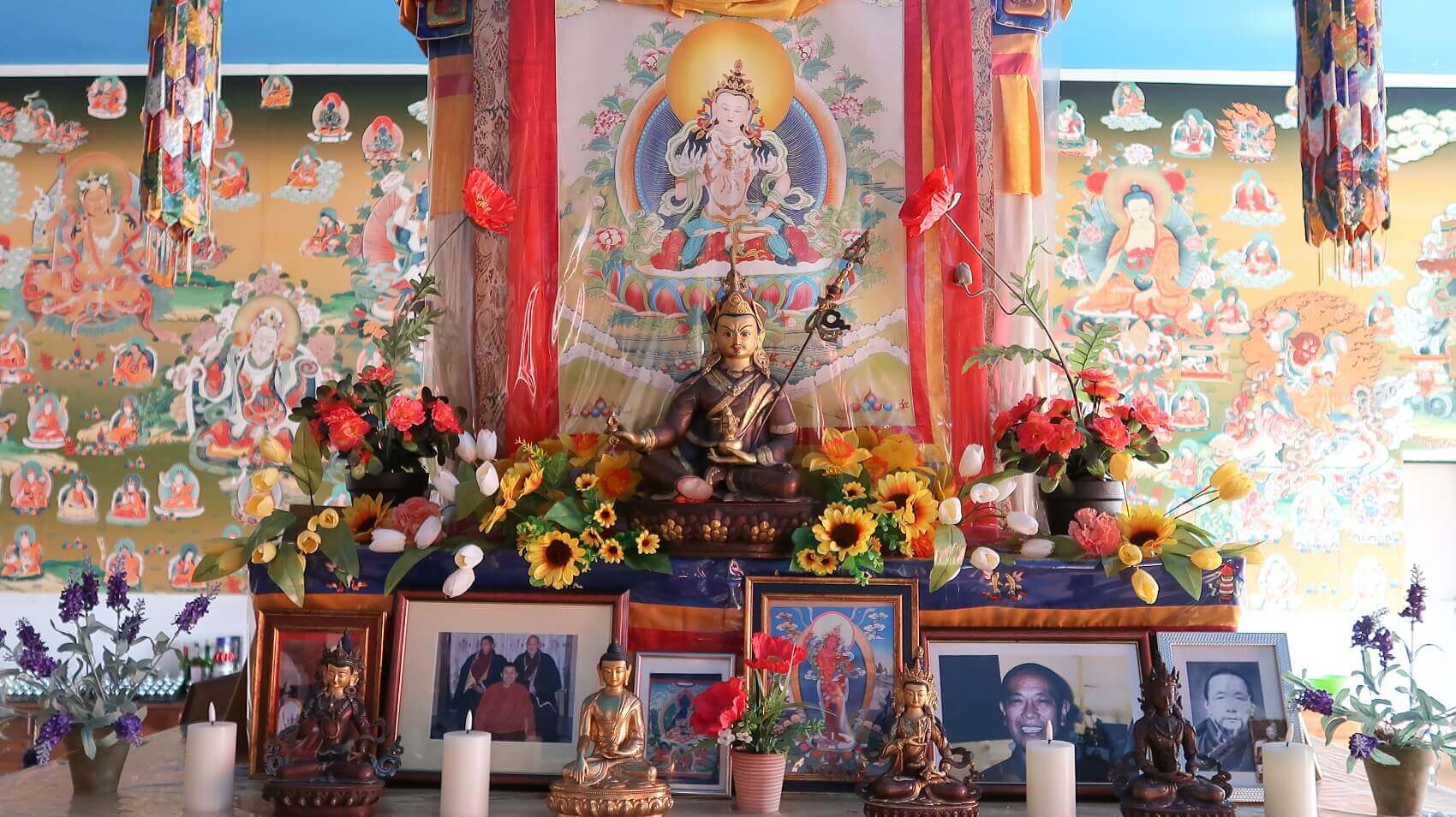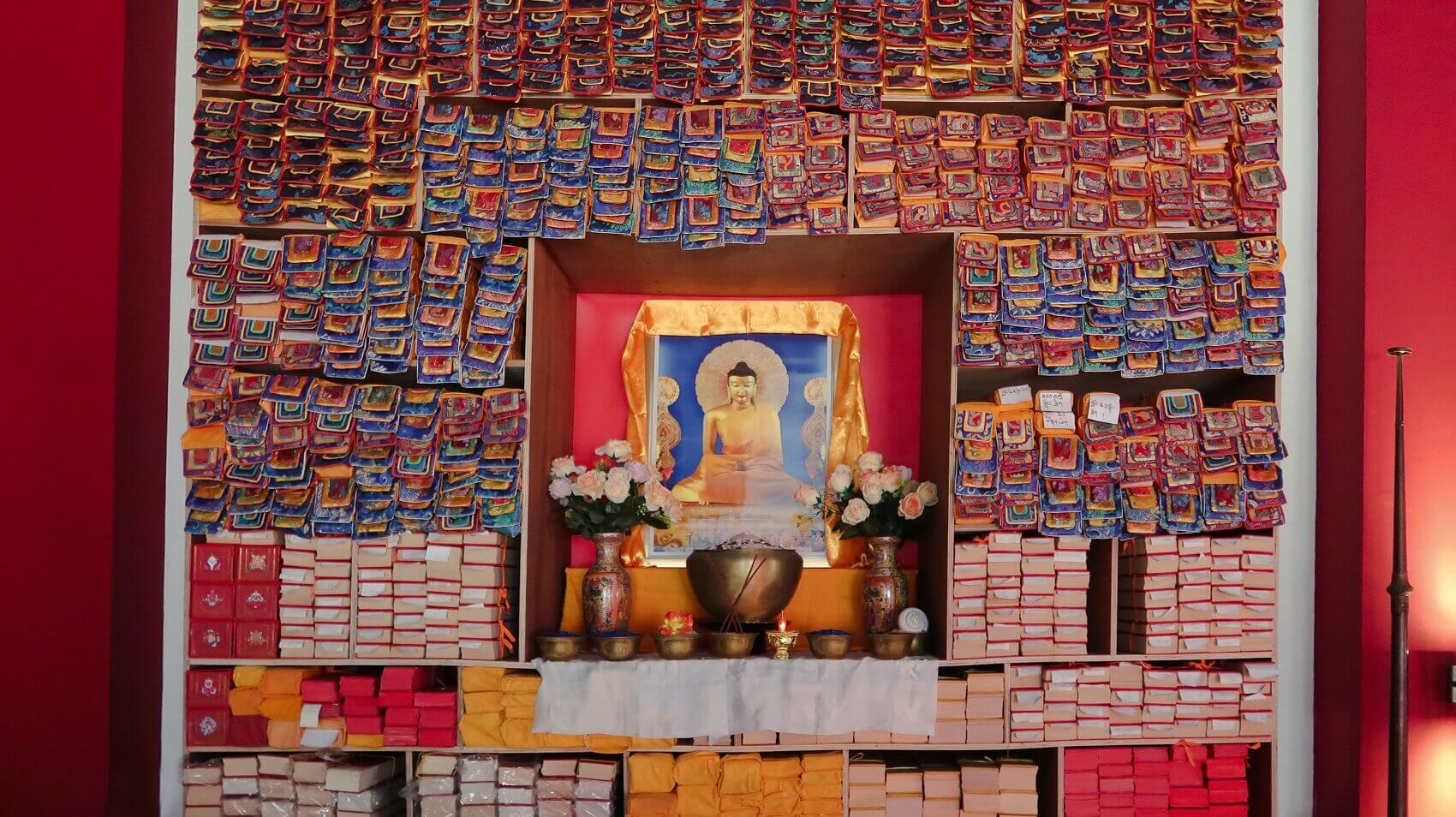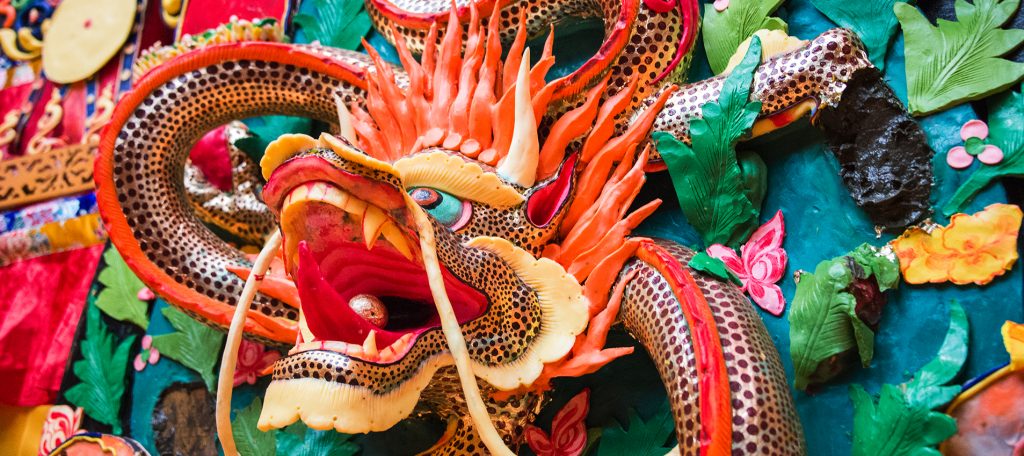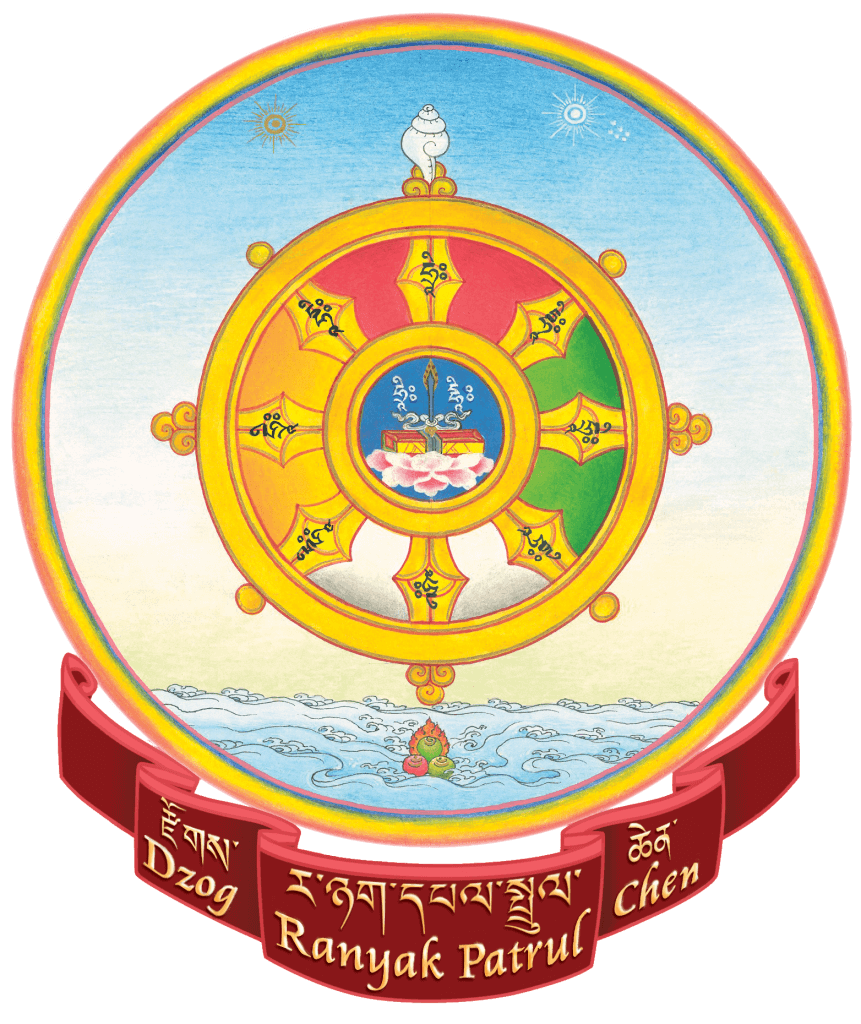TSOK & SOJONG
Take love and compassion of bodhichitta as your basis from the very start.
Never give up your wish to help others.
Make a sincere effort to put everything you know about the generation
and perfection phases into practice to the best of your abilities.
Dza Patrul Rinpoche, The Words of My Perfect Teacher
Tsok and Sojong are practices that are particularly powerful when performed on specific days of the Tibetan lunar calendar. Tsok takes place on the 10th and 25th day of the lunar calendar, while Sojong is performed on the 15th (full moon) and 30th (new moon).

Tsok
TSOK IS A MEDITATION PRACTICE of the generation and perfection phases. In other words, the mind and all senses are focused on the vivid visualisation of a mandala of deities, with the understanding that it has no intrinsic existence. Finally, one dissolves and fully interiorises the mandala. In our tradition, we perform Tsok liturgies of the Longchen Nyingthik. The 10th day of the lunar calendar being favourable for male deities, we practise Rigdzin Düpa, the Gathering of Vidyadharas surrounding Padmasambhava, the root lama. On the 25th day, being favourable for female deities, we practise Yumka Dechen Gyalmo, the root dakini.
Would you like to know more about Rigdzin Düpa and Yumka Dechen Gyalmo?

Sojong
THE RESTORATION OF THE BODHISATTVA VOWS is called ‘Sojong’ in Tibetan. Tibetan Buddhism belongs to the Great Vehicle (Mahayana). Its distinguishing feature is the wish to attain buddhahood not only for oneself, but to establish all sentient beings without exception in that enlightened state. It is a boundless and impartial altruistic scope. However, even if our aspirations are sincere, it is difficult to change selfish habits all at once. This is why the vows are regularly renewed and the breaches are confessed. Sojong is a short practice that we usually do at the end of the daily evening practice on the 15th and 30th day of the lunar month.

